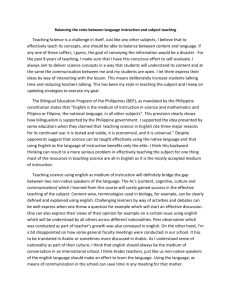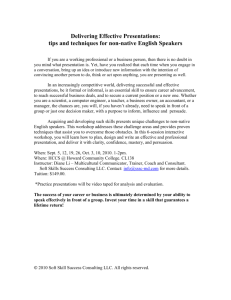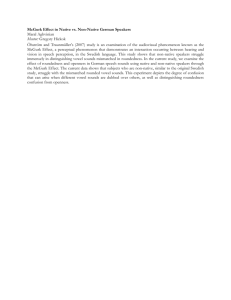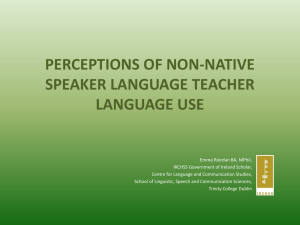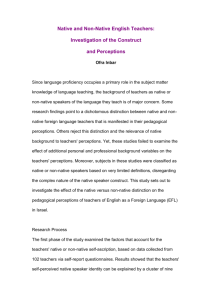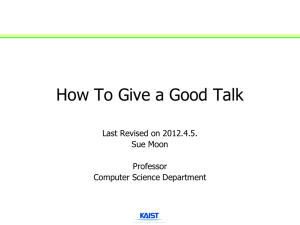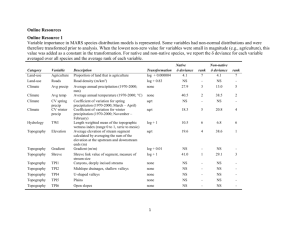ddi12242-sup-0001-FigS1-S5-TableS1
advertisement
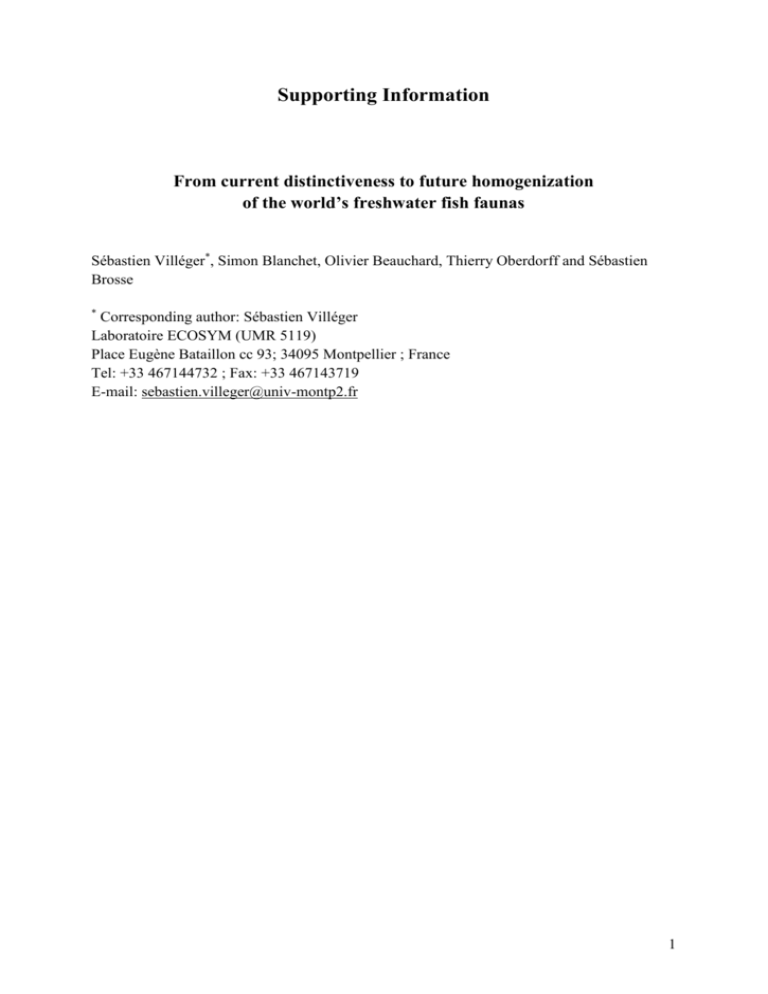
Supporting Information From current distinctiveness to future homogenization of the world’s freshwater fish faunas Sébastien Villéger*, Simon Blanchet, Olivier Beauchard, Thierry Oberdorff and Sébastien Brosse * Corresponding author: Sébastien Villéger Laboratoire ECOSYM (UMR 5119) Place Eugène Bataillon cc 93; 34095 Montpellier ; France Tel: +33 467144732 ; Fax: +33 467143719 E-mail: sebastien.villeger@univ-montp2.fr 1 Table S1. Present patterns of extirpations of native fish species and of introductions of nonnative fish species in the six biogeographic realms. Median and 1st and 3rd quartile of the number of introductions per nonnative species Proportion of nonnative species introduced in at least 10% of river basins (%) Biogeographic realm Number of river basins studied Number of native species extirpations Number of non-native species introductions Number of nonnative species introduced Proportion of nonnative species introduced in only one basin (%) Afrotropical 109 29 156 44 45 2 (1;6) 7 Australian 179 1 406 52 52 1 (1;6) 13 Nearctic 207 19 1330 224 44 2 (1;5) 8 Neotropical 155 8 222 70 60 1 (1;3) 4 Oriental 59 1 149 56 66 1 (1;2) 14 Palearctic 345 4 1407 169 38 2 (1;8) 8 2 Figure S1. Occurrence frequencies of the ten most introduced fish species in the six biogeographic realms. Bar length represent percentage of river basins of each realm where each non-native species has been introduced. The number of basins where each non-native species has been introduced is shown inside corresponding bars. Bars for exotic species (i.e. coming from a different realm) are filled in grey while bars for translocated species (i.e. introduced in additional basins within their native realm) are filled in white. 3 Figure S2. Historical, current and future taxonomic uniqueness (i.e. percentage of river basin pairs sharing no species) (a-d) and mean taxonomic similarity among pairs of fish faunas (e-h) at the world and realm scales for different scenarios of introduction and extirpation considered (see codes in Table 1). The left side of each plot shows the historical and current patterns, while the right side shows simulations of future trends under scenarios of increasing nonnative species occurrences, i.e. increase in the number of non-native species (from 1 to 20; ab, e-f) or increase in the proportion of non-native species richness compared to native species richness (from 10 to 200%; c-d, g-h). Additional non-native species occurrences were selected randomly in the pool of non-native species (a,c,e,g) or according to their current frequencies (b,d,f,h) in each realm. Points represent mean values and the associated 95% confidence intervals. Filled symbols (and solid lines) represent scenarios considering both introduction and extirpation of all species listed as threatened in 2004 while open symbols and dashed lines are for the scenarios considering only introduction. Open symbols, dashed lines and confidence intervals, although present are often hidden behind filled symbols and solid lines. 4 Figure S3. Historical, current and future homogenization (a-d) and differentiation (e-h) frequencies among pairs of fish faunas at the world and realm scales for different scenarios of introduction and extirpation (see codes in Table 1). The left side of each plot shows the current pattern, while the right side shows simulations of future trends under scenarios of increasing number of non-native species occurrences, i.e. increase in the number of nonnative species (from 1 to 20; a-b, e-f) or increase in the proportion of non-native species richness compared to native species richness (from 10 to 200%; c-d, g-h). Additional nonnative species occurrences were selected randomly in the pool of non-native species (a,c,e,g) or according to their current frequencies (b,d,f,h) in each realm. Points represent mean values and the associated 95% confidence intervals. Filled symbols (and solid lines) represent scenarios considering both introduction and extirpation of all species listed as threatened in 2004 while open symbols and dashed lines are for the scenarios considering only introduction. Open symbols, dashed lines and confidence intervals, although present are often hidden behind filled symbols and solid lines. 5 Figure S4. Historical, current and future trends of the median (a-d), skewness (e-h) and kurtosis (i-l) of the taxonomic similarity (TS) among pairs of fish faunas at the world and realm scales for different scenarios of introduction and extirpation (see codes in Table 1). The left side of each plot shows the historical and current patterns, while the right side shows simulations of future trends under scenarios of increasing number of non-native species occurrences, i.e. increase in the number of non-native species (from 1 to 20; a-b, e-f, i-j) or increase in the proportion of non-native species richness compared to native species richness (from 10 to 200%; c-d, g-h, k-l). Additional non-native species occurrences were selected randomly in the pool of non-native species (a,c,e,g,i,k) or according to their current frequencies (b,d,f,h,j,l) in each realm. Points represent mean values and the associated 95% confidence intervals. Filled symbols (and solid lines) represent scenarios considering both introduction and extirpation of all species listed as threatened in 2004 while open symbols and dashed lines are for the scenarios considering only introduction. Open symbols, dashed lines and confidence intervals, although present are often hidden behind filled symbols and solid lines. 6 Figure S5. Distribution of future change in mean taxonomic similarity per river basin. The scenarios consider future extirpation of all species listed as threatened in 2004 and different levels of future non-native species introductions. Left column shows forecasts obtained under a scenario simulating an increase in non-native species introductions from 1 to 20 species per river basin with species selected randomly in the pool of non-native species in each realm (scenarios “Ex04-InEa” in Table 1). Centre and right columns show forecasts obtained under a scenario simulating an increase in the proportion of non-native species richness per river basin (from 10 to 200%) with additional non-native species occurrences selected randomly in the pool of non-native species (centre, scenarios “Ex04-InEp”) or according to their current frequencies (right, scenarios “Ex04-InFp”) in each realm. 7 Figure S6. Future taxonomic uniqueness and future mean taxonomic similarity under three levels of future extirpation. 8 Each plot shows the results of simulations considering the future introduction of one additional non-native species, selected randomly in the pool of non-native species (left side) or according to their current frequencies (right side), together with no future native species extirpation (open circle), the future extirpation of all native species listed as threatened in the 2004 IUCN Red List (filled point), or the extirpation of all native species listed as threatened in the 2014 IUCN Red List (filled diamond). The scenarios codes on top left panel are as in Table 1. Points represent mean values among the 999 replicates simulated for each situation with associated 95% confidence intervals as vertical bars. Historical level of taxonomic uniqueness (or taxonomic similarity) is shown by the horizontal coloured line. 9

